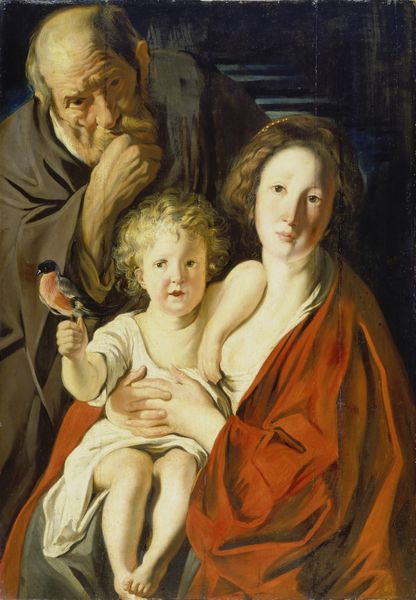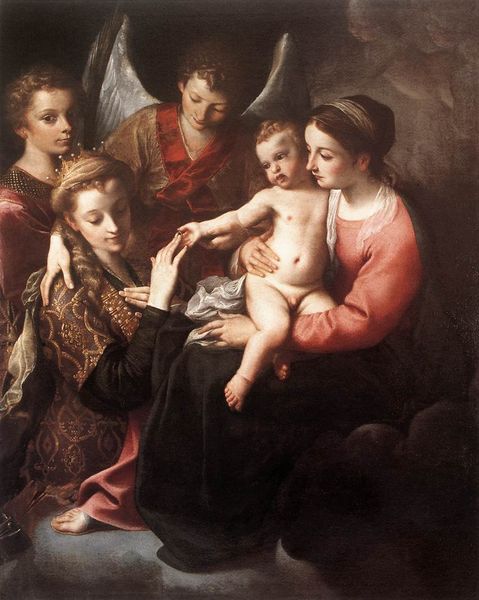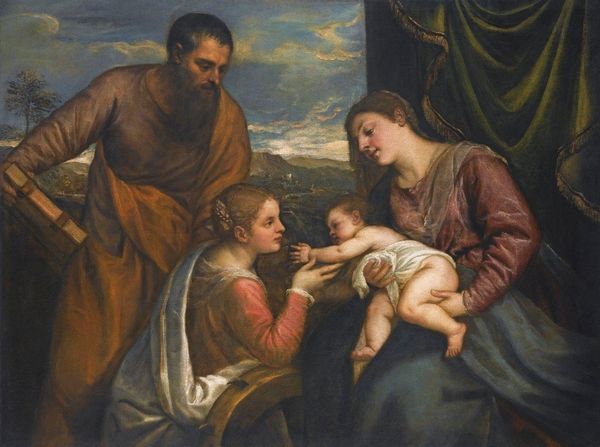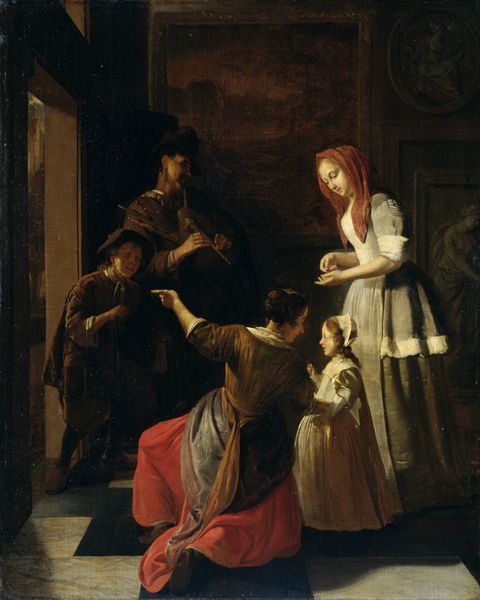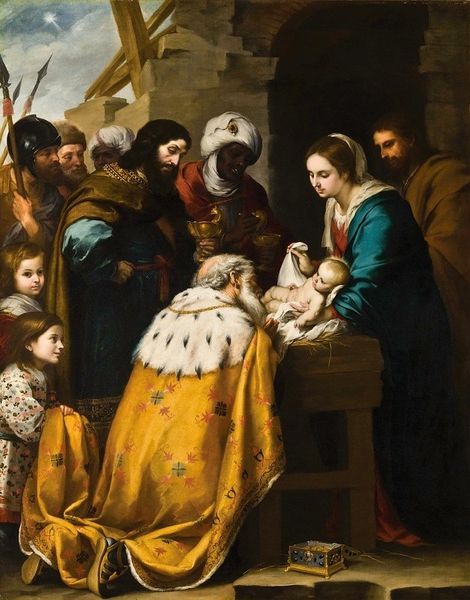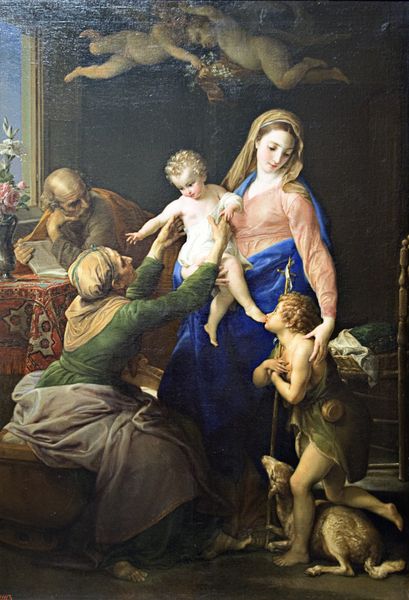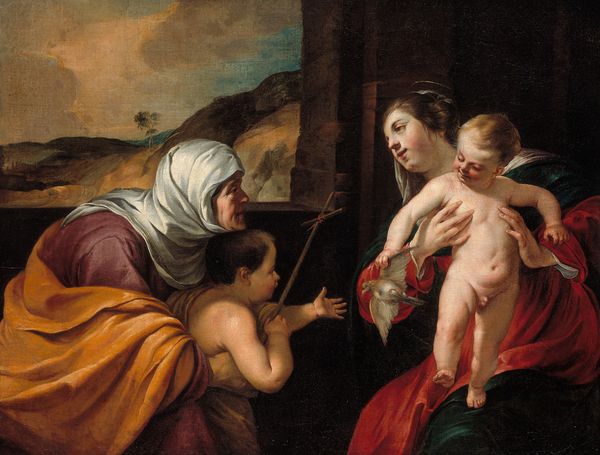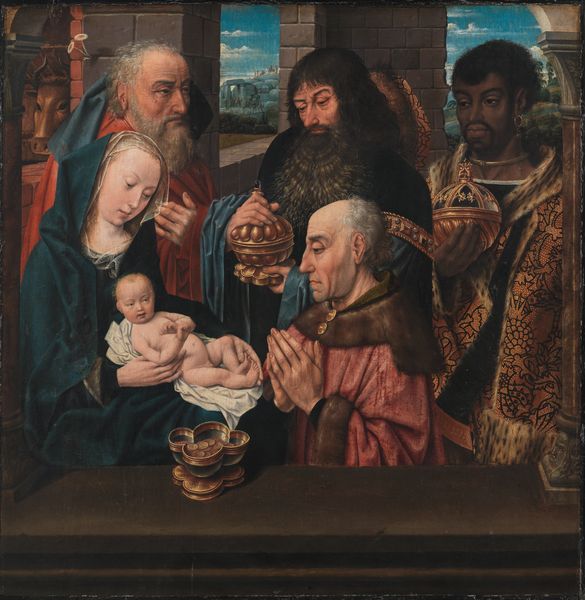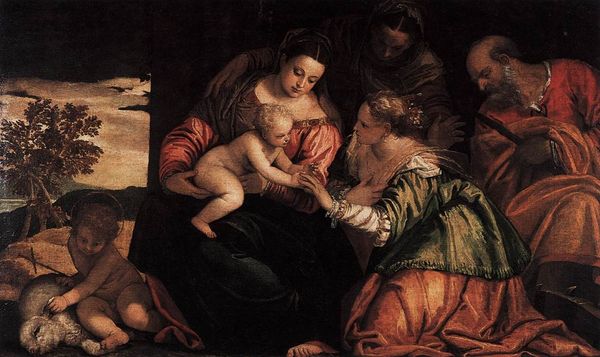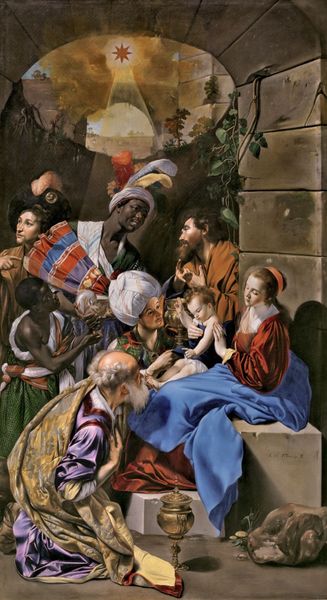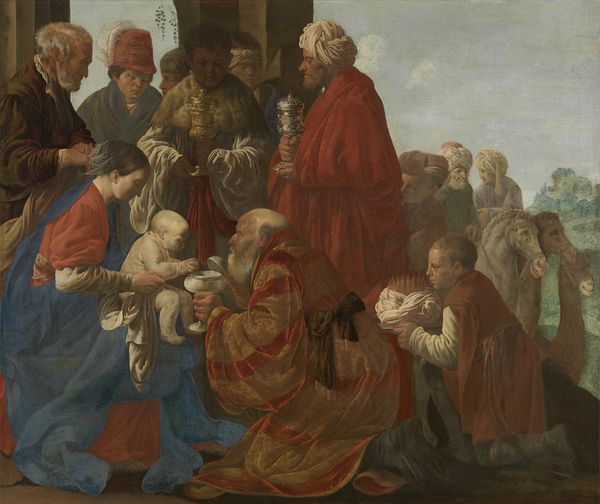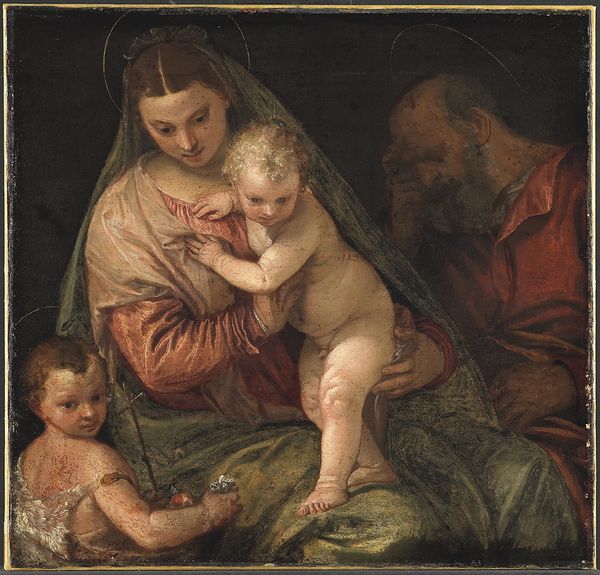
painting, oil-paint
#
portrait
#
baroque
#
painting
#
oil-paint
#
figuration
#
oil painting
#
history-painting
Dimensions: 125 x 203 cm
Copyright: Public domain
Curator: Diego Velázquez painted "Adoration of the Kings" in 1619, using oil paint to render this well-known scene for posterity, which now lives at the Museo del Prado. Editor: The overall darkness is striking. It feels both intimate and monumental, a tight grouping of figures against a stark backdrop—like a theatrical tableau brought to life with somber gravitas. Curator: And within this gathering, consider the careful depiction of each individual face: their features, subtly modeled by light and shadow, convey reverence, but also a remarkable sense of everyday humanity. Even the rich colors adorning their garments speak to earthly wealth and heavenly tribute combined. Editor: The texture, too. The materiality is very important; you can almost feel the weight and sheen of the fabrics. The way the paint is layered hints at a fascinating, complex production. These details would have been luxurious indicators of power in Velázquez's era, wouldn't they? Curator: Indeed, Velázquez used clothing not only as a representation of wealth but as symbols carrying profound social and cultural meanings. The elaborate costumes echo the spiritual significance of the event. The way Velázquez renders the light, drawing our eye toward the Christ child and the reverent gazes around him, speaks to the divine made accessible. Editor: What is interesting for me is also the very practical, material use of pigments to render such rich colors during that period and their trade and manufacture, for example. How did the baroque love for drama interplay with craft practices in bringing this oil painting into being? Curator: It is interesting to reflect on the historical weight that an encounter like this must have represented. Notice the presence of the Black king in this depiction. Consider its profound significance as a symbol of inclusion and universality during a time marked by conflict and rigid social hierarchies. Editor: Yes, it speaks to complex issues within the society of the time that this work can show to the audiences. Analyzing paintings, and their production, helps us understand what materials represented, who was allowed to use certain skills and pigments, and ultimately, how access to resources determined much of baroque culture. Curator: Thank you for helping us reveal both the seen and unseen within "Adoration of the Kings." Editor: Thank you; seeing this in its material and cultural context has given it even more meaning.
Comments
No comments
Be the first to comment and join the conversation on the ultimate creative platform.
